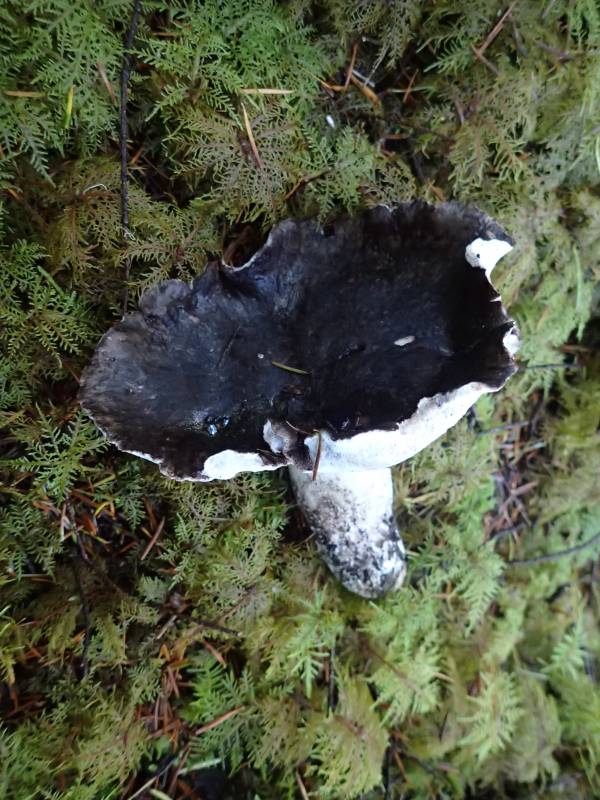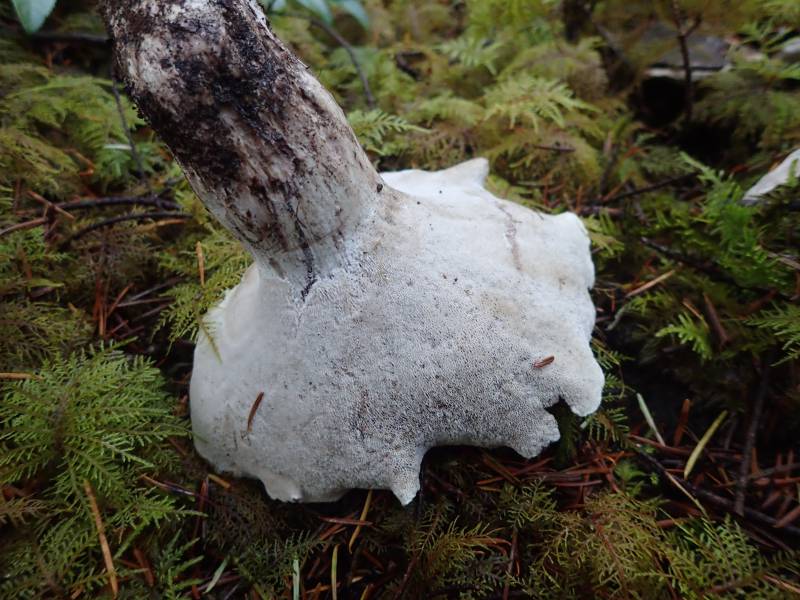Habitat: dry pine woodland
Substrate: Pine
Conservation Status: Not of concern
Edibility: not edible
Spores are pale brown. Fruitbody growth up to 3 inches and cap diameter up to 6 inches.
not edible
The genus Boletopsis is related to some of the spine-fungi such as sarcodons and hydnellums as well as thelephoras, and like them, is ectomycorrhizal. While considered fleshy, the fruitbodies are rather tough and long-lived. The flesh is solid, white, and bitter-tasting. The spores are brownish and angular in outline, a feature that helps separate this genus from Albatrellus and Polyporoletus. Various names have been applied to our western boletopsises and, indeed, the number of species and their tree hosts remain unclear. Current though suggests that at least three speccies could occur in the PNW. The similar B. leucomelaena occurs mainly with spruce. B. smithii is known from a single collection in Washington and is distinctive by the orange coloration of the cap and stipe.
Sources: Trudell, Steve and Joe Ammirati. Mushrooms of the Pacific Northwest. Portland, Timber Press, Inc. 2009. Roberts, Peter and Evans, Shelley. The Book of Fungi. Chicago, The University of Chicago Press, 2011.
Publication: Annales Mycologici 39 (1): 47. 1941.
PNW Herbaria: Specimen records of Boletopsis grisea in the Consortium of Pacific Northwest Herbaria database.
CalPhotos: Boletopsis grisea photos.





